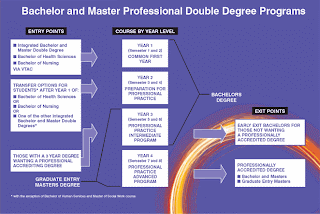he literature of psychology, we will find many learning theories derived
of psychological streams. In the link below will put forward four different theories
learning, namely: (A) the theory of behaviorism, (B) according to Piaget's cognitive learning theory, (C) theory
processing information from Gagne, and (D) gestalt learning theory.
A. Behaviorism Theory
Behaviorism is one stream of psychology that views individuals only from the side
physical phenomenon, and ignore the aspects - the mental aspect. In other words, behaviorism
not acknowledge the existence of intelligence, talents, interests and feelings of individuals in a study.
Event learn merely reflexes trained in such a way that it becomes
habits are controlled individually.
Some legal learning resulting from this behaviorism approach, including:
1. Connectionism (S-R Bond) by Thorndike.
From the experiments conducted on cats produce Thorndike's laws
learning, including:
1.Law of Effect, meaning that if a satisfactory response effect,
the relationship Stimulus - response will be stronger. Conversely, the less
effects achieved satisfactory response, it also weakened the relations
between Stimulus-Response.
2.Law of Readiness; mean that the readiness refers to the assumption that satisfaction
organism comes from pemdayagunaan introductory unit (conduction units), where
These units generate trends that drive the organism to act or
does nothing.
3.Law of Exercise; means that the relationship between the stimulus with the response will be more
increased strongly, if often trained and will decrease if rarely or not
trained.
2. By Ivan Pavlov Classical Conditioning
From Pavlov's experiments conducted to produce a dog laws
learning, including:
1.Law of respondents conditioning that is required by law habituation. If two
kinds of stimuli presented simultaneously (one of whom serves as
reinforcer), then the reflex and other stimulus will increase.
Extinction 2.Law of respondents demanded the extermination of law. If reflexes
been strengthened through conditioning RESPONDENT was brought back without
reinforcer present, then its power will decline.
3. Operant conditioning according B.F. Skinner
From the experiments conducted B.F. Skinner on rats and subsequently in the bird
pigeons produce laws of learning, including:
1.Law of operant behavior conditining ie, if accompanied with a stimulus onset
amplifier, the power of these behaviors will increase.
Extinction of operant 2.Law that is if the occurrence of operant behavior has been strengthened through
conditioning process was not accompanied by reinforcing stimulus, the strength behavior danpunishment rd, a
individuals will think and decide which social behavior needs to be done.
a person takes material into Their mind from the environment, the which May mean changing the
Evidence of Their Senses to make it fit "and the accommodation is" the difference made to one's mind
or concepts by the process of assimilation "
He proposed also, that learning will be more successful when tailored to the stage
cognitive development of students. Learners should be given the opportunity to
experimenting with physical objects, which are supported by the interaction with peers
and aided by insight from the teacher questions. Teachers should provide stimulus to many
to students to want to actively interact with the environment, search and
find different things from the environment.
Implications of Piaget's theory of cognitive development in learning are:
1.Bahasa and the way children think differently from adults. Therefore teachers
teaching by using appropriate language with the way children think.
2.Anak children will learn better if it can properly deal with the environment.
According to Gagne stages of the learning process involves eight phases namely, (1) motivation, (2) understanding, (3) acquisition, (4) storage, (5) recall, (6) generalization, (7) treatment and (8) bait behind.
D. Gestalt Learning Theory
Gestalt comes from the German language which has the equivalent meaning as "permanent or
configuration ". Main Gestalt view is that the object or event will
viewed as a whole is organized. According to Koffka and Kohler, there
seven most important principles of organization are:
Learning Theories
Date: October 4, 2008
by: Akhmad Sudrajat, M.Pd.
When reviewing the literature of psychology, we will find many learning theories derived
of psychological streams. In the link below will put forward four different theories
learning, namely: (A) the theory of behaviorism, (B) according to Piaget's cognitive learning theory, (C) theory
processing information from Gagne, and (D) gestalt learning theory.
A. Behaviorism Theory
Behaviorism is one stream of psychology that views individuals only from the side
physical phenomenon, and ignore the aspects - the mental aspect. In other words, behaviorism
not acknowledge the existence of intelligence, talents, interests and feelings of individuals in a study.
Event learn merely reflexes trained in such a way that it becomes
habits are controlled individually.
Some legal learning resulting from this behaviorism approach, including:
1. Connectionism (S-R Bond) by Thorndike.
From the experiments conducted on cats produce Thorndike's laws
learning, including:
1.Law of Effect, meaning that if a satisfactory response effect,
the relationship Stimulus - response will be stronger. Conversely, the less
effects achieved satisfactory response, it also weakened the relations
between Stimulus-Response.
2.Law of Readiness; mean that the readiness refers to the assumption that satisfaction
organism comes from pemdayagunaan introductory unit (conduction units), where
These units generate trends that drive the organism to act or
does nothing.
3.Law of Exercise; means that the relationship between the stimulus with the response will be more
increased strongly, if often trained and will decrease if rarely or not
trained.
2. By Ivan Pavlov Classical Conditioning
From Pavlov's experiments conducted to produce a dog laws
learning, including:
1.Law of respondents conditioning that is required by law habituation. If two
kinds of stimuli presented simultaneously (one of whom serves as
reinforcer), then the reflex and other stimulus will increase.
Extinction 2.Law of respondents demanded the extermination of law. If reflexes
been strengthened through conditioning RESPONDENT was brought back without
reinforcer present, then its power will decline.










 7:52 PM
7:52 PM
 consulting education
consulting education



 Posted in:
Posted in: 





























